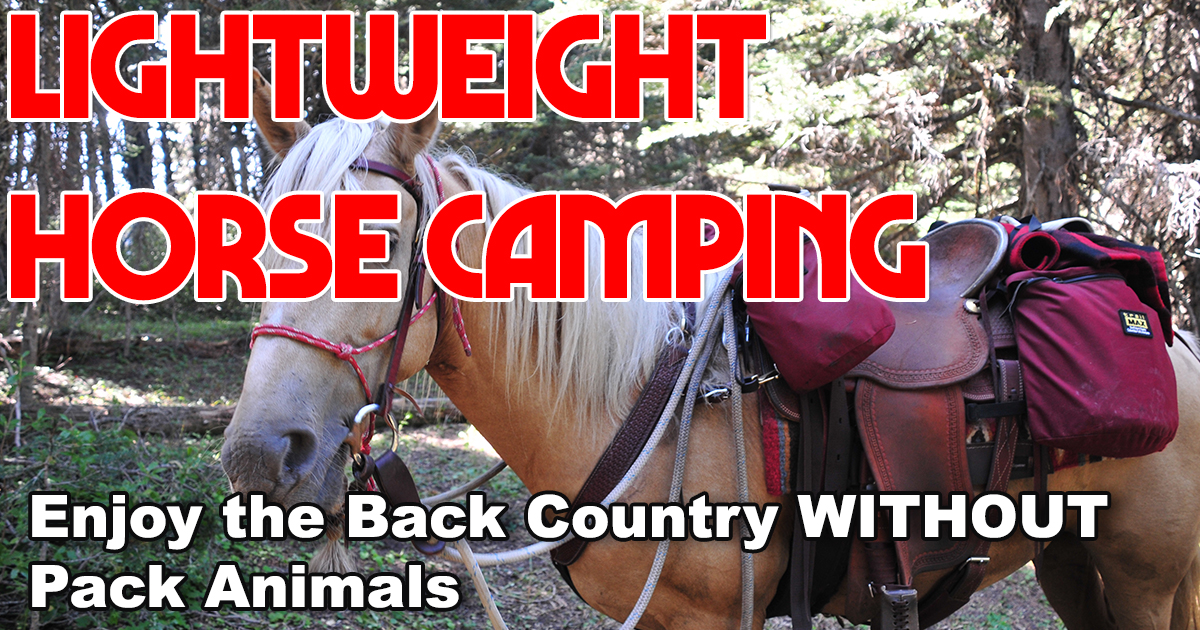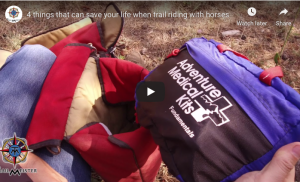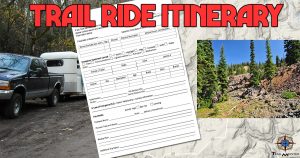Lightweight Horse Camping – Go Without a Pack Horse – Smart and Savvy Tips for Solo Camping in the Backcountry
As published in the September 2019 issue of The Northwest Horse Source.
Going on an overnight camping trip with just your trail horse is simple with the right planning especially for those already familiar with camping and backcountry riding.
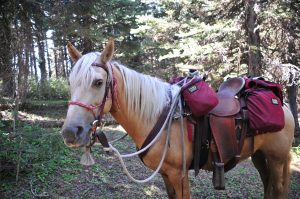
LT loaded for a weekend trip
For many people camping with horses away from the trailhead evokes images of pack mules, canvas wall tents, and the delicious aroma of Dutch oven cooking wafting through a pine scented meadow. While this is a beautiful image and a great way to experience the backcountry, the reality is that most horse owners don’t have the pack animals needed to haul in the hundreds of pounds of gear to make this picture a reality, and may not want to hire a professional packer. There’s an alternative: lightweight horse camping directly off of your riding stock.
For me the most important thing to remember is that lightweight horse camping should be an enjoyable experience for BOTH you and your horse (or mule)! That means that you may have to leave behind some of the luxury items that we’ve become accustomed to when trailhead camping out of our trailers.
Let’s look to the world of backpackers for inspiration. The gear required for camping without a pack animal is very similar to what you already use when camping at a trailhead only lighter and smaller. Fortunately we have lots to choose from. With this type of low weight and volume gear, you’ll be able to pack all of the essentials for a comfortable trip (shelter, food, etc.) in just a set of saddle, cantle, and horn bags.
With that in mind, let’s explore what works and has allowed me to explore much of the western U.S.
Prior Preparation:
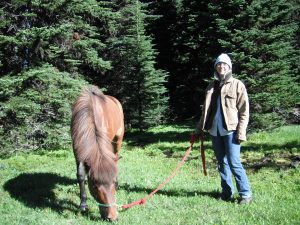
Grazing your animal is a great way way to start the day
Where to Go: Not all areas are suitable for camping without a pack horse. When a horse is packing not just you, but also all of your camp, it’s impractical to carry equine feed or water. For that reason we must plan our solo trips around good grazing and reliable water sources. Research your trip prior to leaving home so you’ll know what type of forage is available. If grazing and water isn’t available it’s best to find another destination.
You can find places to go in a variety of ways— on the web at www.TrailMeister.com, or ask local chapters of the Back Country Horsemen of America, they’ve been there done that!
Ensure that you and your animal are BOTH ready for the adventure. Both of you will need to in condition for long days on the trail and have a good understanding of what it is to be away from other people and horses. For me the first camping trip of every year happens at home in the back pasture. Keeping our initial trip close to home lets me sort out any issues before we’re 20 miles into the backcountry where a mistake can have larger consequences.
Skills to Know:
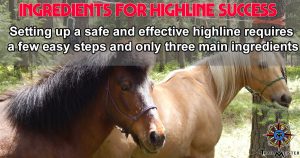 How to set up a highline – https://www.trailmeister.com/ingredients-for-highline-success/
How to set up a highline – https://www.trailmeister.com/ingredients-for-highline-success/
Emergency Skills – https://www.trailmeister.com/4-things-can-save-life-horse-riding/
The Equipment:
It’s imperative to think about lightweight and low volume items that multi-task when back country camping with a single horse. Minimizing what you carry into the backcountry allows you to maximize your riding experiences.
Over the years I’ve been working on reducing my impact on multi-day outings while staying safe and comfortable – without over tasking my horse. Careful planning and gear selection can result in a base weight (weight of your camping gear exclusive of tack and food) of less than 15 pounds.
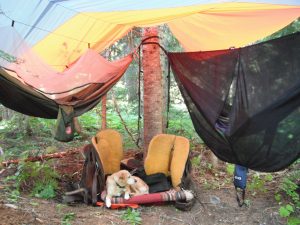
A snug camp in the wilderness
Shelter – Look to the backpacking community for examples of feather-light shelters. You can easily find tents that weigh far less than 10 pounds. I like the Solo Shelter by 5 Owls for its durability. I’ve also taken to the trees and used hammocks for a great night’s sleep. Modern camping hammocks weigh less than a pound and compress smaller than a softball when packed. My main sleep/shelter system consists of a hammock, down sleeping bag rated to 30 degrees, insulating pad, and tarp for rain. This four piece system weighs less than 5 pounds and packs easily into a cantle bag.
On the Trail:
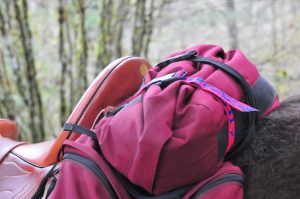
Compression straps are your friends for lightweight but bulky items
Keep the weight over the shoulders. Horses and mules carry weight over their shoulders better than behind the saddle, so the heaviest items (such as water bottles, cameras, etc.) would best go in your horn bags. Lightweight items such as sleeping bags live in the cantle bag. Other light items, cook stove, dehydrated food etc. live in the saddle bags. In a perfect world you’ll have a friend going with you and can share some items such as the stove, 1st aid kit, etc.
I use the cavalry’s rule of thumb and try not to ask my riding animal to carry more than 20% of its weight, including rider and tack. This is very hard to do and I’ll admit that often I’m pushing 30% when camping without a pack horse so I try to be as considerate as I can by keeping my heavy hauling days short, occasionally dismounting and walking to give my beast a break. I also use a use a scale to weigh all of my packed equipment.
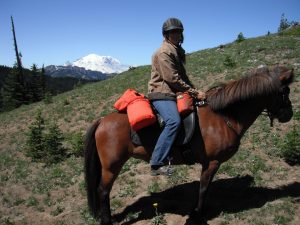
Be able to mount and dismount easily.
When you’re loading your animal think about getting on and off. Bathroom breaks happen and you want to be able to actually swing your leg over your gear. I often see people that can barely get on and off their horse packed with big, bulky loads. In an emergency this can be dangerous.
It should be needless to say, but the weight of your load should be evenly distributed on both sides of your horse.
Before You Go:
Once all the preparations have been made, you’ve practiced a few times at home, and ready to load up take one additional moment to leave your trip agenda with a responsible person.
Here’s what I leave with my wife so she knows where I’m going, when I plan to be back and what to do in case of an emergency. https://www.trailmeister.com/trail-ride-itinerary/
So there you go, my thoughts on camping without a pack horse! You can explore new country, and see amazing sights without hiking in. For more information on trail riding and horse camping visit www.TrailMeister.com the world’s largest guide to horse trails and camps.


